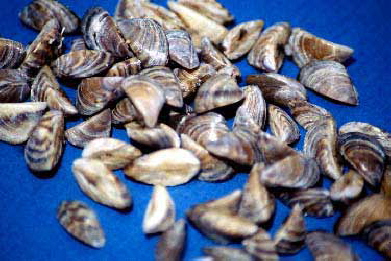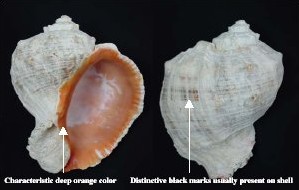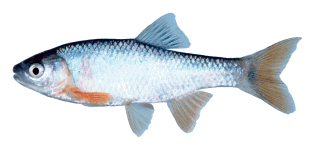- Home
- About S&T
- Taxa/Organisms
- Ecosystems
- Issues
- Methods & Tools
- Reports & Publications
- Location
- Search
Publisher: USGS | Science Center: USGS Other | Format: URL
nas.er.usgs.gov — This site has been established as a central repository for accurate and spatially referenced biogeographic accounts of nonindigenous aquatic species. The program provides scientific reports, online/realtime queries, spatial data sets, regional contact lists, and general information. The data is made available for use by biologists, interagency More...

July 31 2007 | Publisher: Other Federal Agency (Center for Coastal Monitoring and Assessment (CCMA)) | Format: URL
ccma.nos.noaa.gov — This website is the entry point to data for the Mussel Watch, Bioeffects, and Benthic Surveillance programs. This resource links to the National Status & Trends Program fact sheet (pdf), and several projects including Mussel Watch, Benthic Surveillance, and Bioeffects Assessment. Users can also get general information about the Center for More...

Publisher: USGS | Science Center: Florida Integrated Science Center (FISC, Gainesville) | Format: URL
fl.biology.usgs.gov — This website is a map that shows the Progression of the Zebra Mussel (Dreissena polymorpha) Distribution in North America. The site links to a distribution map in small lakes and also a photo gallery.

Publisher: USGS | Science Center: Biological Informatics | Format: URL
biology.usgs.gov — This web page presents samples of genetics and genomics research from the USGS Biological Resources Discipline about the conservation genetics of mollusks.

Publisher: USGS | Science Center: Leetown Science Center (LSC, Kearneysville) | Format: URL
www.lsc.usgs.gov — Freshwater bivalves, which are among the most threatened animals in North America, present significant challenges to conservation biologists that attempt to maintain ecological and evolutionary processes within and among populations. Effective management of this rare fauna is often complicated because inadequate information exists for More...

Publisher: USGS | Science Center: Upper Midwest Environmental Sciences Center (UMESC, LaCrosse) | Format: URL
www.umesc.usgs.gov — Zebra mussels have caused drastic declines in native clam and mussel populations in some locations. Zebra mussels compete with other invertebrates and young fish for plankton, the primary food source for these groups. UMESC scientists are investigating the effects zebra mussels are having on the riverine ecosystem. This study examines the effects More...

Publisher: USGS | Science Center: Upper Midwest Environmental Sciences Center (UMESC, LaCrosse) | Format: URL
www.umesc.usgs.gov — Freshwater mussels are the largest group of federally listed endangered or threatened invertebrates, and their declines may signal declining riverine health. They are a renewable resource, providing significant ecological and economic benefits to the Nation. Our study uses a landscape-level approach to assess whether the distribution of mussels More...

Publisher: USGS | Science Center: Florida Integrated Science Center (FISC, Gainesville) | Format: URL
fl.biology.usgs.gov — This resource is a species profile and nonindigenous species information bulletin for the Veined Rapa Whelk, Asian Rapa Whelk, Rapana venosa (Valenciennes, 1846) Mollusca: Gastropoda, Muricidae. The shell is globose (rounded), with a very short-spire and large body whorl. The veined rapa whelks are carnivorous gastropods whose main diet More...

Publisher: NBII | Format: URL
www.nbii.gov — Natural resource managers face complex decisions that require a clear understanding of the status of wildlife populations and their habitats. Monitoring is key to making effective management decisions and evaluating the outcomes of those decisions. The goal of NRMP is to improve the accessibility of monitoring efforts to resource managers to aid More...

Publisher: USGS | Science Center: Fort Collins Science Center (FORT, Ft. Collins) | Format: URL
www.fort.usgs.gov — Natural Resource Monitoring Partnership (NRMP) is a collaborative effort by the natural resource management community to improve monitoring efforts in order to support effective evaluation and decision-making by sharing information on monitoring projects and protocols. The Natural Resource Monitoring Partnership was built for easy access to More...

Publisher: USGS | Science Center: Florida Integrated Science Center (FISC, Gainesville) | Format: URL
fl.biology.usgs.gov — This web resource is a map representation of the distribution of zebra and quagga mussels in U.S. lakes. Zebra mussels were first detected in 1988 in Lake St. Clair, located between Lake Huron and Lake Erie. Within just a few years, they spread into all five of the Great Lakes. Since then, zebra mussels have spread into many large navigable More...

Publisher: USGS | Science Center: Florida Integrated Science Center (FISC, Gainesville) | Format: URL
fl.biology.usgs.gov — Southeastern Aquatic Fauna studied at the Center are freshwater, anadromous and estuarine fishes, and freshwater mollusks, with expertise in the study and conservation of the southeastern aquatic fauna, including freshwater fishes and mussels. The Southeast Aquatic Faunal Team provides critical information necessary to assess the status of this More...
